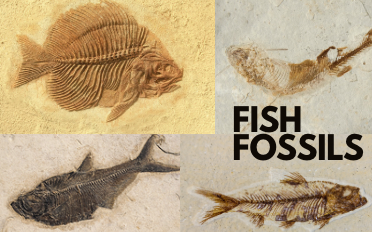Fish Fossils | Fossil Information, Properties All Entries

Wyoming fish fossils are remarkable remnants of ancient aquatic life that provide valuable insights into the prehistoric world. These fossils, often found in the sedimentary rock formations of Wyoming, offer a glimpse into the diverse and fascinating marine ecosystems that existed millions of years ago.
The formation of Wyoming fish fossils begins with the deposition of sediment in ancient bodies of water, such as lakes, rivers, or oceans. Over time, layers of sediment accumulate and bury the remains of fish and other aquatic organisms. As the sediment compacts and solidifies, it transforms into sedimentary rock, preserving the delicate structures of the fish within.
Metaphysically, Wyoming fish fossils are associated with grounding, ancient wisdom, and the cycles of life. They are believed to carry the energy and wisdom of the past, connecting us to ancestral knowledge and ancient Earth. These fossils are often used in meditation and spiritual practices to foster a deeper connection with nature, history, and the flow of time. They are thought to promote stability, resilience, and a sense of interconnectedness with the natural world.
Physically, Wyoming fish fossils come in various sizes and shapes. They can range from small fragments to complete fish specimens embedded in rock. Fossils of different fish species, such as Knightia or Diplomystus, are commonly found in Wyoming and are renowned for their exceptional preservation. These fossils exhibit intricate details, including scales, fins, and sometimes even soft tissues, providing valuable information about the anatomy and biology of ancient fish.
The physical properties of Wyoming fish fossils can vary depending on the type of rock in which they are preserved. Fossils encased in shale or limestone may have a smooth or layered appearance, while those preserved in sandstone may have a coarser texture. The colors and patterns present in the rock surrounding the fossil can further enhance its aesthetic appeal.
Wyoming fish fossils not only serve as captivating reminders of the Earth's ancient history but also play a crucial role in scientific research and education. They contribute to our understanding of past ecosystems, evolutionary processes, and the biodiversity that once thrived in ancient waters. These fossils are highly valued by collectors, paleontologists, and enthusiasts alike for their scientific significance and inherent beauty.
Whether appreciated for their scientific importance, metaphysical properties, or aesthetic allure, Wyoming fish fossils hold a place of intrigue and wonder in the world of paleontology and natural history. They offer a tangible connection to the distant past, inviting us to explore the mysteries of ancient life and gain a deeper appreciation for the ever-changing nature of our planet.